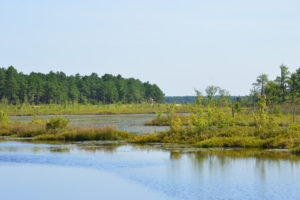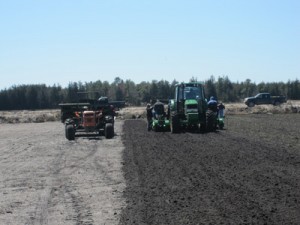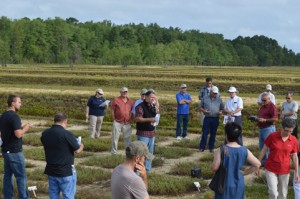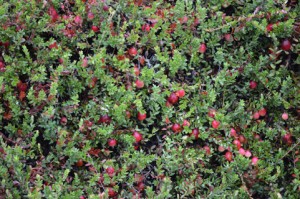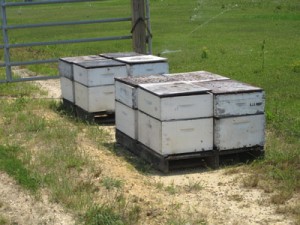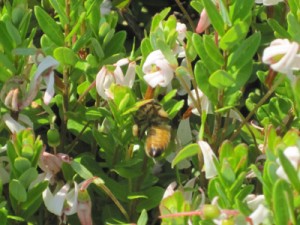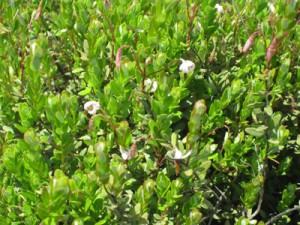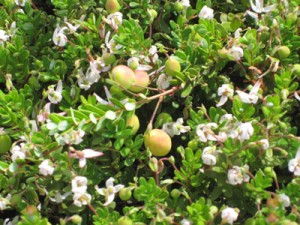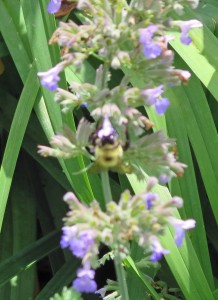Last week several Pine Island Cranberry team members attended the annual American Cranberry Growers Association (ACGA) summer field day at the Rutgers extension center. While several topics are similar to those discussed at the winter meeting, the field day is a chance to go out and explore the researchers’ valuable work first hand.
Dr. Cesar Rodriguez-Saona once again put together an excellent and informative program, starting with the very first summer field talk for weed specialist Thierry Besançon. In addition to a “show and tell” session with Stephen Lee, we also bid a fond farewell to Ray Samulis, our Burlco Agricultural Agent, whose talk on farm safety has long been a mainstay of our meetings! We’ll miss you, Ray, and we promise: we’ll keep our initials off your list.
The most important part, however, is always the chance to sit down and catch up with fellow cranberry growers. “During the busy growing season, you seldom have the chance to talk to them about what they’re doing: how they see the crop, what new things they’re trying. It’s a great chance for growers to exchange ideas,” says Pine Island CEO Bill Haines. And our friends and neighbors feel much the same way!
ACGA President Shawn Cutts:
The meeting this year was excellent. All of the speakers provided valuable information and insight. It was great to hear updates on all the important ongoing research at the Marucci Center. The presentation on Root Growth in Cranberries by Dr. Amaya Atucha was a highlight that presented new and interesting information to NJ growers on how and when cranberry roots grow.
Joe Darlington, J.J. White:
I thought this meeting was a very good one; the weather even cooperated pretty well. All of the researchers presented interesting and useful info. This was the first time I heard Nick [Vorsa, Director at the Marucci Blueberry and Cranberry Research and Extension Center] say 1,000 barrels per acre in a public setting. Now we just need to put that together with real rot resistance. It is good to see that Thierry is on the ground and running with his research.
Bill Cutts, Cutts Brothers:
I thought the weather was great and the talks all had some nuggets of interest and progress in solving some of our problems; I found the talk about roots by the researcher from Wisconsin particularly interesting. I also encourage everyone to bring a chair or stool next year. It was great to sit comfortably while listening to the talks!
Jeff LaFleur, Mayflower Cranberries:
It is always great to visit with so many friends and colleagues at the ACGA meeting. It is especially valuable for me as a relatively new grower to see the latest in varietal development and pest management. With the increased emphasis on fruit quality I always learn something new from Peter Oudemans that I can use on my farm back in Massachusetts.
Finally, all of us at the ACGA as well as Pine Island Cranberry wish a speedy recovery to Tommy Budd! We missed you on Friday, sir, and look forward to seeing you again soon.

